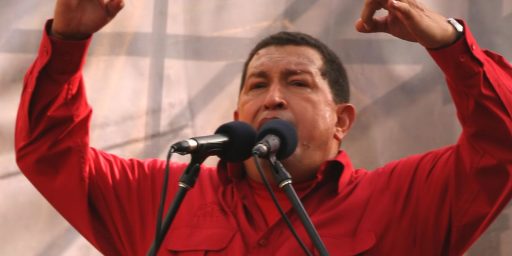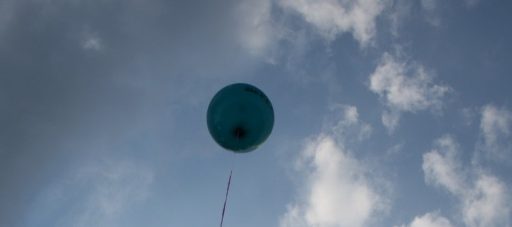Bolivia Breaking Up?
Jack Wheeler, guesting at Winds of Change, says the current map of Bolvia may soon become “obsolete.”
Bye-Bye Bolivia? [also @ TCP]
For some time now, a lot of Bolivians have been conducting a “Gas War,” blocking roads, demonstrating in cities like El Alto and Cochabamba to prevent the export of Bolivian natural gas by foreign companies. The fellow coordinating the protests is Evo Morales, a Marxist protégé of Venezuelan dictator Hugo Chavez, the leader of the MAS (Movement Towards Socialism) Party, and also the leader of coca leaf growers (the stuff that’s made into cocaine). The protests brought down the presidency of Gonzalo Sanchez do Lozada in October 2003 and continue to escalate: 820 in the last 17 months. The current government of Sanchez’s successor Carlos Mesa in teetering.
There’s just one problem for Morales and Chavez. The Bolivians who are protesting are not the Bolivians who live where the gas is. Bolivia is about to split in two.
[…]
The people who live in the lowland states of Santa Cruz, Tarija, and Beni are predominantly Europeans (e.g., Spanish, Italian, German extraction). These states, with only 20% of Bolivia’s population (total 8.8 million) account for all of Bolivia’s gas production, and well over half of the country’s manufacturing and agriculture.
The other 80% live in the highlands of the Andes mountains, in the Altiplano or Andean valleys such as the Yungas and Cochabamba — and they are predominantly Indian, mostly Quechua or Aymara. Led by Evo Morales, a majority of them are demanding the seizure and nationalization of the gas reserves and production facilities in the lowlands. His MAS Party is being financed by Hugo Chavez, who sees himself as Fidel Castro’s intellectual heir and is attempting to Marxist-revolutionize all of South America.
This does not sit well with the prosperous and anti-Marxist Cruceños (the folks in Santa Cruz, the lowlands’ center), who have come to despise the ruling elite in the capital city of La Paz (and who are thus called Paceños), so much so that they have forced President Mesa to hold a referendum in June, whereby the Cruceños get to vote for their autonomy from the national government.
There’s a lot more at the link, including several maps.





So will they split La Paz and Sucre as capitals? Does anybody remember this grade-school geography factoid, that Bolivia is the only country that has two capital cities (Is that still true? Was it ever really true in the first place?)
David: I recall that from geography class, you are not alone!
Also, wasn’t Che Guerva killed in Bolivia?
There is no point in splitting La Paz and Sucre since both cities are in the altiplano (highlands). Sucre, in reality, does not have any governmental power. It is like comparing DC with Philadelphia.
Yes, Che Guevara was killed in Vallegrande in Bolivia.
These problems between the indigenous people from the altiplano region and the more Cruceños from the tropical region have been brewing for many years. Unfortunately, when the government privatized many of its industries (oil, airlines, etc.)the foreign investors/companies ravaged/squeezed the companies for money and even spare parts. The destruction of many of Bolivia’s more successful industries coupled with the lack of any successful exports (except the coca which backs Morales’ political interests)plus an overabundance of debt puts Bolivia in a vary precarious position.